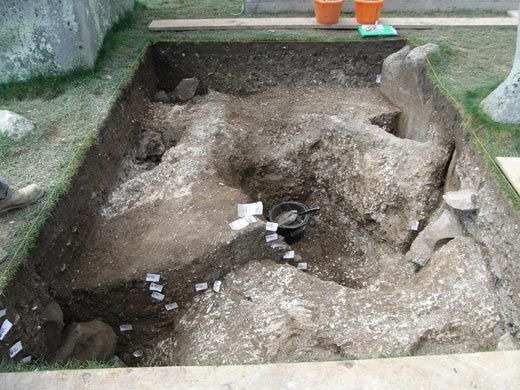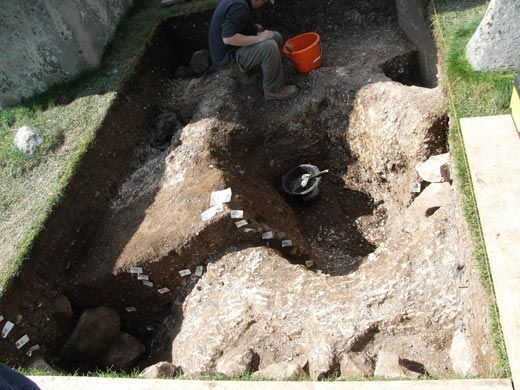Dispatch from Stonehenge, Day 10
April 9: Archaeology in a Fishbowl
/https://tf-cmsv2-smithsonianmag-media.s3.amazonaws.com/filer/dis4-stonehenge-631.jpg)
There is one clear lesson from the past 10 days of excavating at Stonehenge: if you're planning to dig up one of the world's most intriguing archaeological sites, anticipate that a good chunk of your time will be spent dealing with the ensuing media and academic frenzy.
The official inauguration of the project consumed almost the entire first day, leaving only 11 days for the actual excavation. The sacrifice, however, was worth it, in terms of raising public awareness about the excavation and the theory that the lead archaeologists, Tim Darvill and Geoff Wainwright, are seeking to validate—that Stonehenge was a not a burial ground or massive calendar, but a pilgrimage site for healing. News about the excavation has saturated the British media. (Even the sensationalist tabloid, The Sun, ran a story about it—albeit not as long as an article speculating about Paul McCartney's new girlfriend.) Since then, reporters and film crews from as far afield as Russia have converged on the monument to see the now-famous trench. The various archaeologists on the team have had to take periodic breaks from shoveling and shifting to do interviews. Welcome to archaeology in a fishbowl.
Today, it was the turn of academics to join reporters for the privilege of an up-close-and-personal encounter with Stonehenge's past. On the hour, groups of eight or so were escorted to the inner circle, where Darvill and Wainwright took turns to deliver impromptu seminars.
Despite these intrusions, progress has continued apace. (The result of 12 hours per day on site.) The emerging physical evidence—including fragments of bluestone and sarsen scattered throughout the site—reflect a complex history: the original bluestones that comprised Stonehenge were placed here, then moved there, perhaps moved again and then left behind—only to suffer a thousand blows from hammers and chisels, as people sought to possess their chunk of the magical stone, believed to have life-giving properties.
These findings challenge more orderly accounts of Stonehenge's history, which envisioned it being built in more-or-less distinct stages. A fuller picture of the history of this small plot of land will no doubt emerge over the coming days of digging and the ensuing months of analysis.
Meanwhile, the hunt continues for charcoal to be used in carbon dating and pinpointing the precise year that the bluestones arrived at Salisbury Plains. (Some snail shells found in the trench can also be dated with this technique.) Darvill and Wainwright remain sanguine and believe they will get the material they need. They will, in any case, get everything that is there. If this dig doesn't provide the answers, they are probably not there to be found.
Dan Jones is a freelance science writer who has contributed articles to New Scientist.

